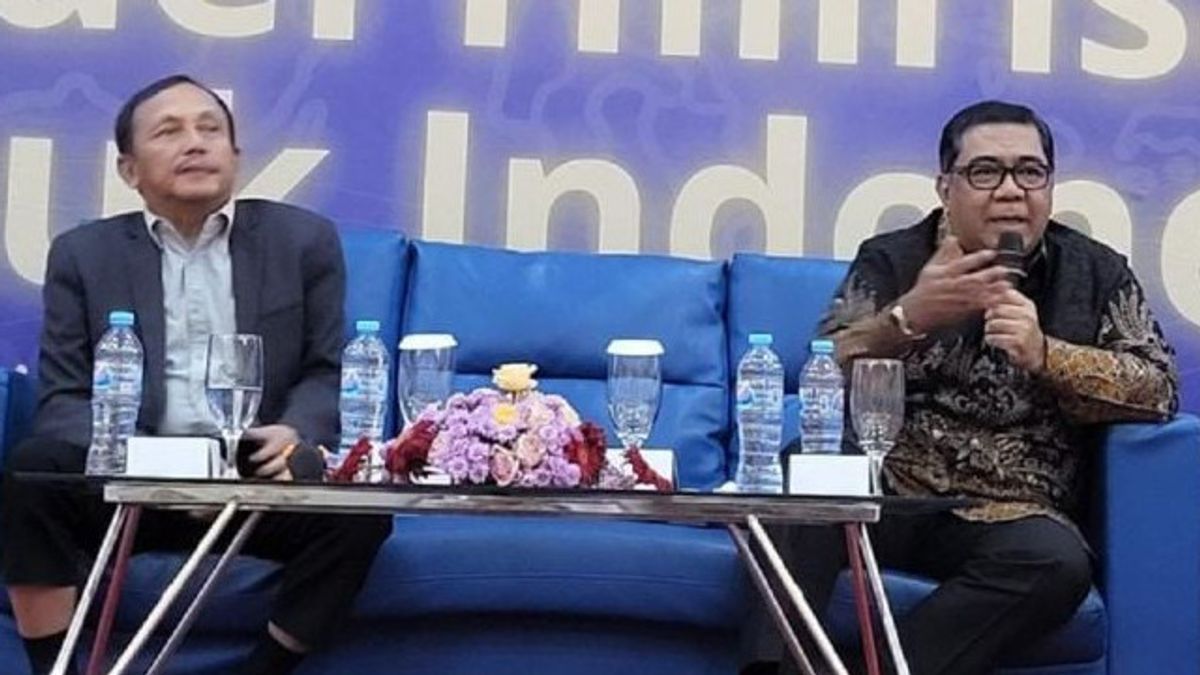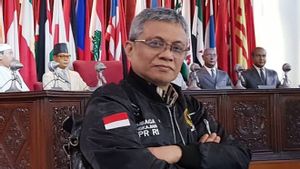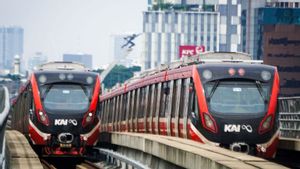JAKARTA - The Indonesian Chamber of Commerce and Industry (Kadin) proposed seven downstream strategies for the marine and fisheries sector, which the government could implement.
Deputy Head of the MSME Development Agency, Indonesian Chamber of Commerce and Industry's Economy, Yugi Prayanto said seven downstream strategies were needed to increase the volume and value of Indonesian fisheries and marine exports.
"This strategy is based on analysis of challenges, obstacles, and potential in the marine and fisheries sector," he said in his statement in Jakarta, quoted from Antara, Thursday, May 30.
The seven strategies proposed by Kadin are the alignment and harmonization of existing regulations so that they are more effective and efficient both between institutions, ministries, and regions.
Building a national fish logistics system, increasing the fish processing industry (UPI), simplifying funding schemes for fishery production and processing.
Then shorten the distribution path from UPI to final consumers for logistics cost efficiency, increase sales of frozen products to the retail market and encourage industries to make products that are easy to cook at home.
Citing data from the Central Statistics Agency (BPS), the average national fish consumption in 2021 will reach 55.37 percent kg/capita increase from 2020 which is 54.56 kg/capita.
Meanwhile, shrimp and tuna skipjack are the leading commodities in the fisheries sector based on value and volume. Meanwhile, other potential products are based on the value of which, rajungan-kepiting, squid and seaweed.
The volume and export value of fishery products in 2021 also recorded changes compared to 2020. The volume in 2021 was recorded at 1.22 million tons, while in 2020 it reached 1.26 million tons.
However, in terms of value, fishery exports in 2021 will reach 5.72 billion US dollars, or an increase compared to 2020 worth 5.21 billion US dollars.
Meanwhile, regarding obstacles and challenges in the marine and fisheries sector, according to Yugi, the main problem in the fishery processing industry is the lack of raw materials.
"If raw materials are available, the price is higher than that of competing countries such as India, Vietnam, the Equador, and other countries," he said.
Then, there are many central and local government regulations, especially in aquaculture and capture fisheries, which are considered to hinder fishery production.
SEE ALSO:
Meanwhile, he added, the majority of fishery products are traded in a fresh form, so quality is difficult to maintain, fishery product selection is not good, because not all fishery products are increasingly being processed with added value. "Other approaches are inadequate funding schemes," he said.
Yugi stated that Indonesia is a maritime country with significant fishery potential and contribution for the world. Apart from being a habitat for various fish species, the archipelago sea is also the foundation of people's lives with various types of businesses.
Indonesia is also the center of its additional fisheries, shipping and tourism business, and has the second-longest coastline in the world after Canada (202,000 km), with a length of 55 thousand km.
The English, Chinese, Japanese, Arabic, and French versions are automatically generated by the AI. So there may still be inaccuracies in translating, please always see Indonesian as our main language. (system supported by DigitalSiber.id)
















